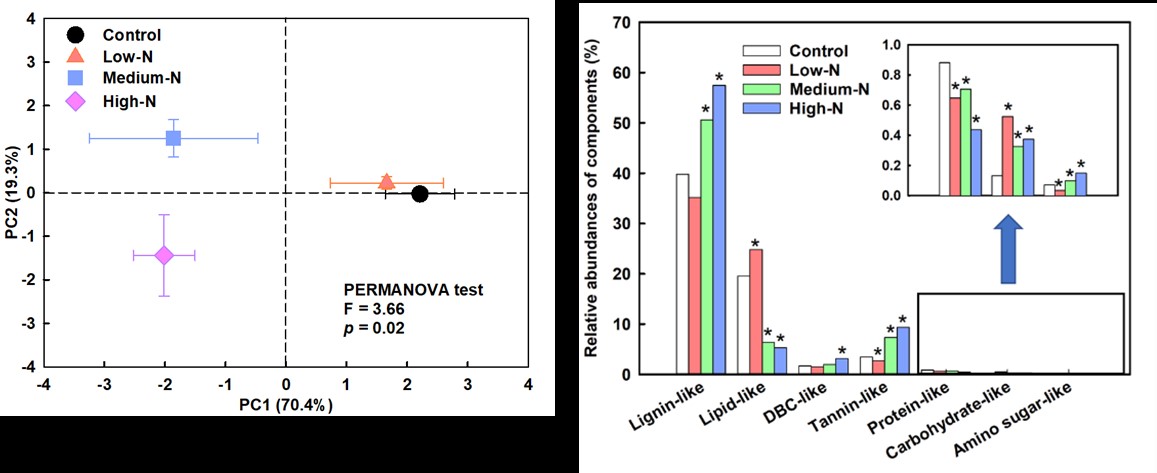Long-term nitrogen deposition alters the dissolved organic matter composition in tropical forest soils
Dissolved organic matter (DOM) plays a key role in forest carbon biogeochemistry by linking soil organic carbon (SOC) sequestration and water fluxes, which is further shaped by elevated atmospheric nitrogen (N) deposition. Although enhanced SOC sequestration was evidenced in tropical forests due to rising N deposition, it remains unclear how long-term N inputs affect soil DOM composition, which regulates SOC sequestration capability due to its mobility and biological instability.
Based on a long-term simulative N deposition experiment in a primary tropical forest in south China, Prof. Xiankai Lu’ group at South China Botanical Garden, explored the quantity, optical properties, and molecular-level characteristics of soil DOM in response to increased N additions. They found that 18-year N additions significantly altered soil DOM composition, with an increasing trend in soil dissolved organic carbon content. Medium- (10 g m?2 yr?1) and high-N addition (15 g m?2 yr?1) markedly elevated DOM average molecular weight and aromaticity, with specific ultraviolet absorbance at 254 nm increasing by 17%, modified aromatic index by 35%, and condensed aromatics by 67%. Long-term N addition also increased recalcitrant DOM components but decreased other DOM components, with increasing percentages of lignin-like, tannin-like, and carboxylic-rich alicyclic molecule-like compounds, and decreasing percentage of more bioavailable contributions. Importantly, significant correlations of the SOC content of the heavy fraction with optical properties and with recalcitrant DOM components were observed. These findings suggest that long-term N additions may alter soil DOM composition in a way to benefit soil OC storage in the primary tropical forests.
The study was recently published in Environmental Research Letters with a title of “Do long-term high nitrogen inputs change the composition of soil dissolved organic matter in a primary tropical forest?” It was supported by the National Natural Science Foundation of China, and Youth Innovation Promotion Association CAS. For the full article, please refer to: https://doi.org/10.1088/1748-9326/ac8e87

Figure 1. Effect of long-term N addition on the optical properties of soil DOM (left panel) and the relative abundance of different biochemical components (right panel) in a tropical of South China.
File Download: